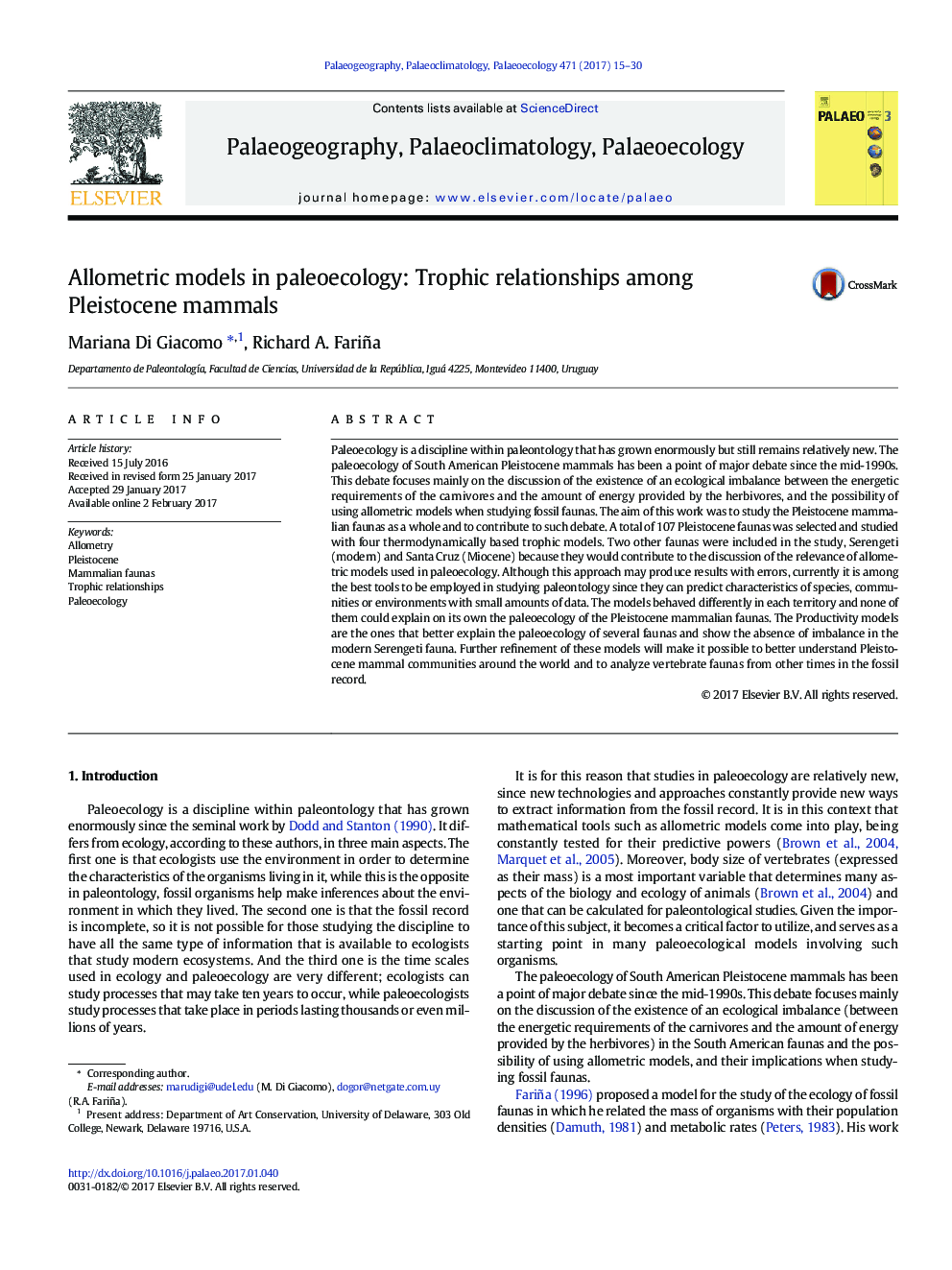| کد مقاله | کد نشریه | سال انتشار | مقاله انگلیسی | نسخه تمام متن |
|---|---|---|---|---|
| 5755923 | 1622121 | 2017 | 16 صفحه PDF | دانلود رایگان |
- Global overview of the paleoecology of Pleistocene mammals using energy models
- The “Productivity” models better explain the paleoecology in Pleistocene faunas.
- The models are not affected by the presence of taxa without modern representatives.
Paleoecology is a discipline within paleontology that has grown enormously but still remains relatively new. The paleoecology of South American Pleistocene mammals has been a point of major debate since the mid-1990s. This debate focuses mainly on the discussion of the existence of an ecological imbalance between the energetic requirements of the carnivores and the amount of energy provided by the herbivores, and the possibility of using allometric models when studying fossil faunas. The aim of this work was to study the Pleistocene mammalian faunas as a whole and to contribute to such debate. A total of 107 Pleistocene faunas was selected and studied with four thermodynamically based trophic models. Two other faunas were included in the study, Serengeti (modern) and Santa Cruz (Miocene) because they would contribute to the discussion of the relevance of allometric models used in paleoecology. Although this approach may produce results with errors, currently it is among the best tools to be employed in studying paleontology since they can predict characteristics of species, communities or environments with small amounts of data. The models behaved differently in each territory and none of them could explain on its own the paleoecology of the Pleistocene mammalian faunas. The Productivity models are the ones that better explain the paleoecology of several faunas and show the absence of imbalance in the modern Serengeti fauna. Further refinement of these models will make it possible to better understand Pleistocene mammal communities around the world and to analyze vertebrate faunas from other times in the fossil record.
Journal: Palaeogeography, Palaeoclimatology, Palaeoecology - Volume 471, 1 April 2017, Pages 15-30
